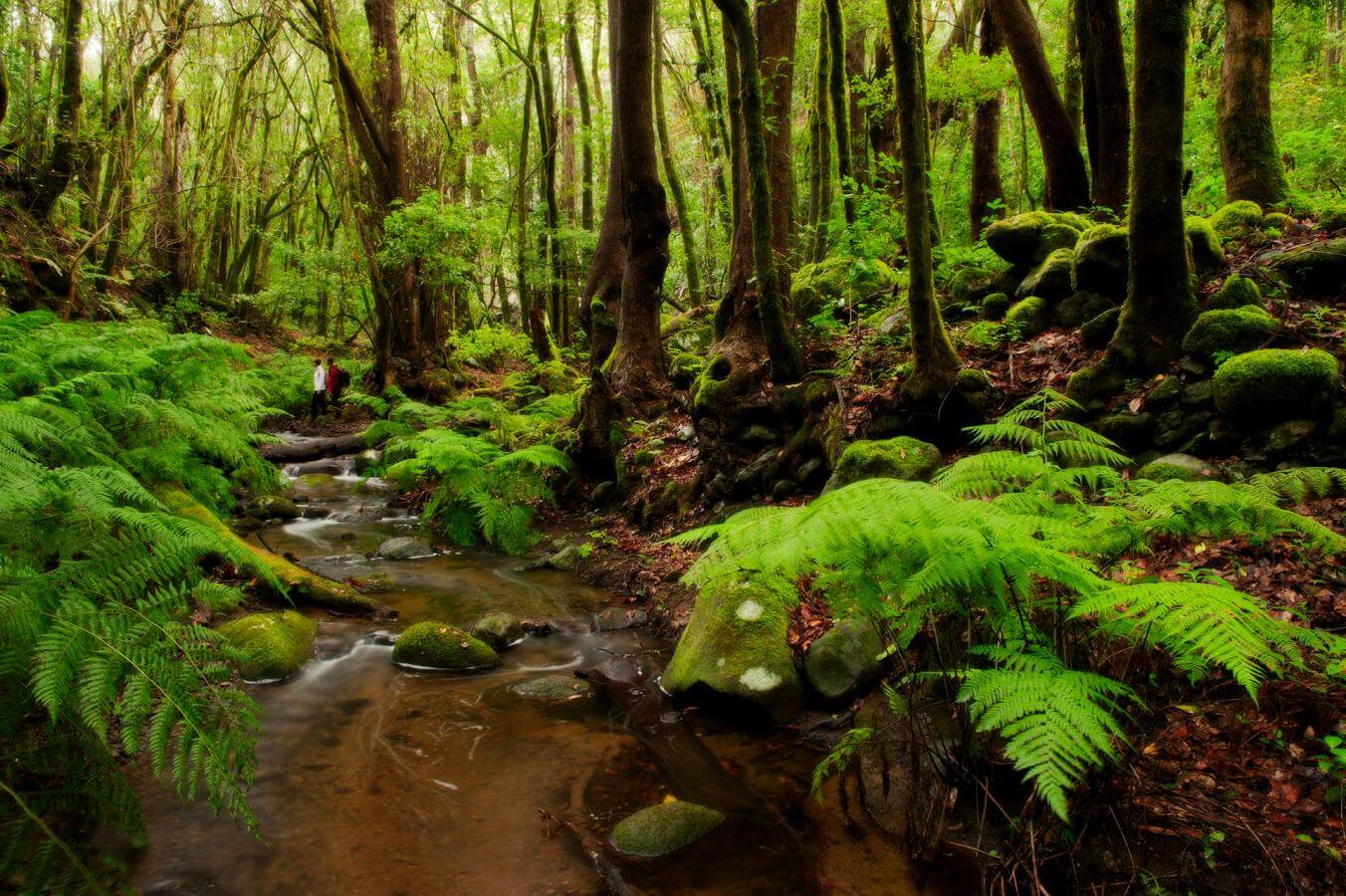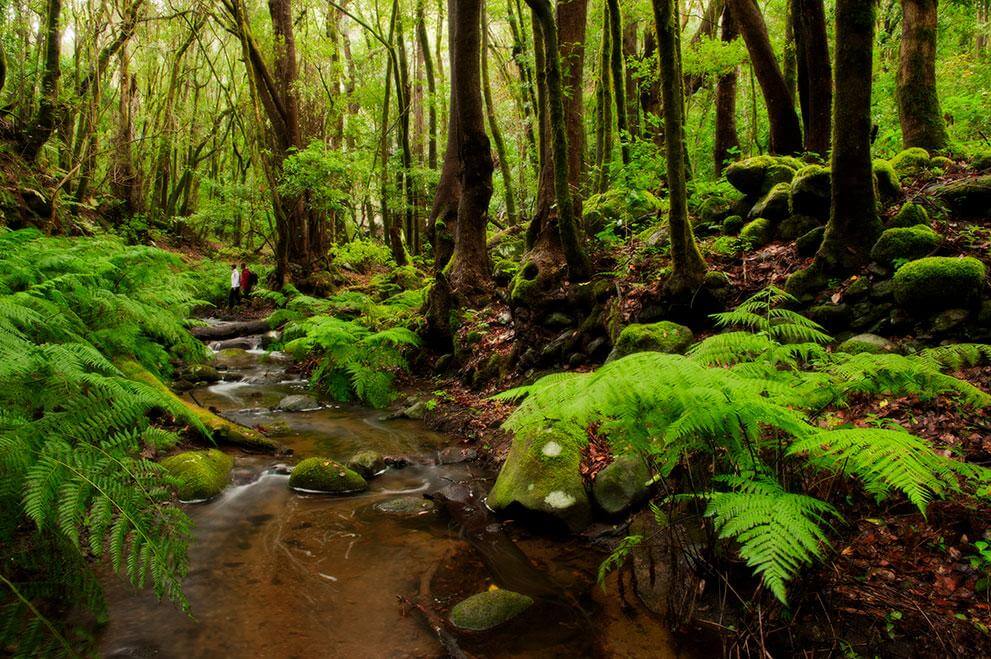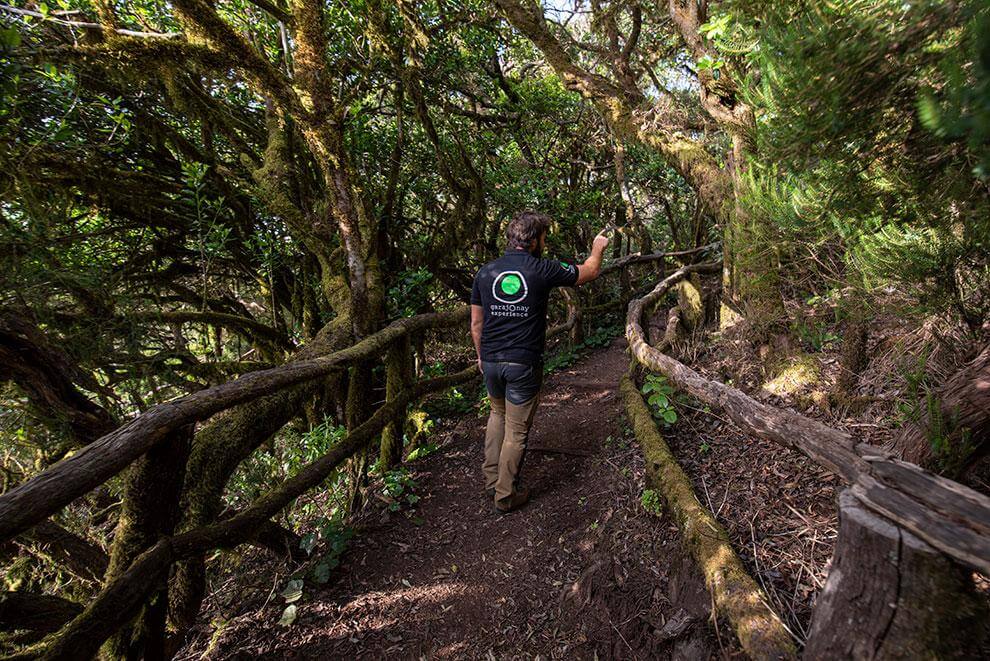A place to recover your energy and feel the balance of nature.



The mist hangs over the tops of these giants, which are over 30 meters high, over the green mantle that covers the roots, the trunks and the stones. “This forest is a living organism that is affected by everything,” explains Marcelino del Arco, professor at the University of La Laguna, “and has existed for more than two million years.” He refers to the laurel forest of Garajonay National Park, one of the most important of its kind in the world, located in the municipality of Hermigua, in the heart of La Gomera.
The laurel forests are spectacular subtropical forests typical of humid and warm places, with large trees, vines and lianas. “You have to have the soul of an explorer when you walk through this extension of almost 4000 hectares,” says Del Arco, a professor specialized in Canarian vegetation, who made that the vegetal cartography of this Park be declared a World Heritage Site by UNESCO in 1981. Garajonay is a relic that allows us to travel to the tertiary age, as was the subtropical forest that covered the entire Mediterranean basin and North Africa 20 million years ago.



“The interesting thing is seeing the importance of its antiquity and its conservation,” adds Del Arco. “The forest,” he says, “is dominated by plants that are lauriform. It is not just a forest of laurels, but of plants from different families, all with leaves that resemble those of the laurel and that turn reddish. There are also linden trees, which have a preference for very wet troughs with a preeminence of fog. In Garajonay alone there are 484 species of flora,” he adds. The mocan, palo blanco, barbusano, heather and faya are some of the ones that can be admired in the driest laurel forest areas. In the more humid valleys, those facing north, we find the laurel forest of the valley with vines and lindens. And on the same humid slopes lives the laurel forest comprised basically of laurel, faya and small-leaved holly. On the summits, where the incidence of the mist of the trade wind is greater, the enigmatic summit heath appears and the faya and tree heath dominates on the southern slope. There are native species and island endemisms. Thus, the wild orange tree, the Macaronesian cedar and barbusano stand out. To these we must add a multitude of lichens, fungi and mosses where a varied fauna has been maintained with numerous invertebrates, amphibians, reptiles and birds. Among the great wealth of birds, the endemic laurel pigeon and Bolle’s pigeon stand out.
Before humans populated this planet, there was already laurel forest on La Gomera “brought by birds, which left their seeds in the ground,” says Pedro Oromí Masoliver, professor of zoology. Walking along its paths one understands that the forests are not only the lungs of the planet, but also its memory. In fact, Juana María González, professor of the biology department at the University of La Laguna, explains that “for an unforgettable excursion in Garajonay you have to take a magnifying glass and observe this kind of species that live inside the laurel forest, inside the mosses, where smaller mosses live.”






Oromí Masoliver also believes that to really feel the power of nature on a walk through this forest “you have to lift stones, looking closely at the bark of the trunks, or go and look under those rotten branches, where you can find unique animal species or unique ways of living.” This biologist explains that one of his most exciting discoveries “was finding in Garajonay cave species that has evolved to live outside the caves, because on La Gomera there are none. That’s the way this forest is.” He remembers the first time he walked through it, when he had never seen the laurel forest “and this Dantesque landscape, which seems decrepit, left me astonished; for a clean forest is not a forest rich in life. The more logs, moss and clutter on its paths, the more alive it is,” he says.
Its trails are walked on by animals unique to this place and its endemic mosses have developed the ability to retain water for months like sponges. “We must bear in mind that the Garajonay forest is at the gates of a desert, because that is the geographical location of the Canary Islands and yet,” he adds “it is one of the most important in the world and one of the few remaining with specimens from the Tertiary Era.”
Experts say that the mist is the indispensable element for the life and magic of this forest. “The horizontal rain mist is especially noticeable in the crest area. A very intense fog rain is formed there that allows this whole ecosystem to grow,” says Del Arco. The wind, “the trade wind, if it blows hard, helps to bring in and capture the water, which benefits the whole forest.”
Garajonay has a Visitor’s Center in the area called Las Bolas, which can be easily reached by car, bus or bicycle from the capital, San Sebastian de La Gomera. It is usual to spend the night in the rural lodgings of this area of great interest for mountain lovers and for its spectacular dawns.



